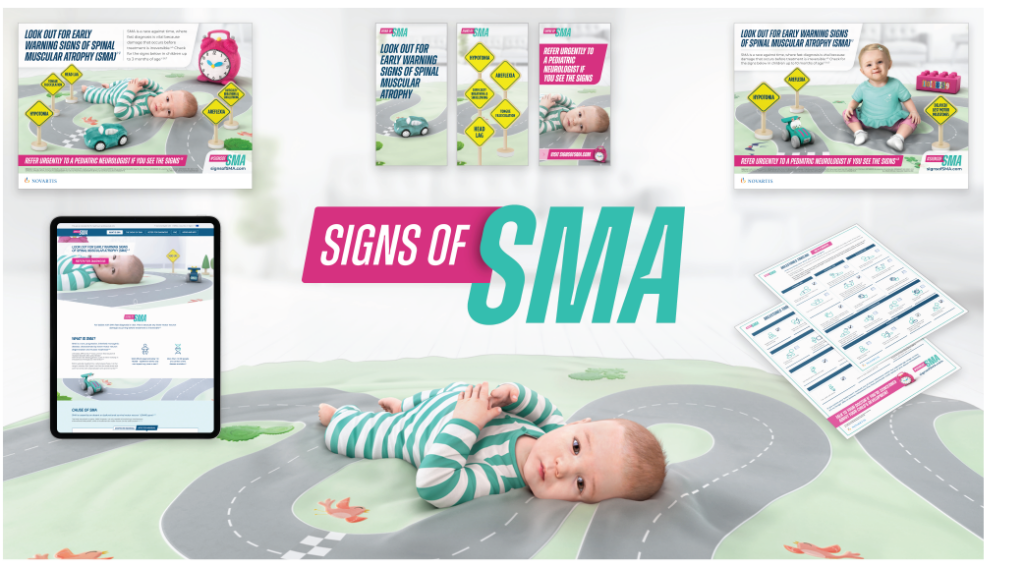Creative Impact Award
With grateful thanks to our sponsor

Naloxone is a drug that can reverse an opioid overdose. It’s free and legal to carry in the UK, yet people are still dying in their thousands.
The Hidden Lifesavers set out to change that, targeting the people best placed to carry naloxone: people who use drugs. Knowing the community was wary of outsiders, we co-created the campaign with the community itself, unearthing powerful stories and hard truths. We shared them on street posters in UK cities with high heroin use — and our audience listened.
Demand for naloxone went up by 33% and an estimated 1 in 4 people using opioids now carry a kit.
Judges comments
The creative here was thoughtful, powerful, and authentic — bringing forward a life-or-death topic with a tough-to-engage group who are stigmatised and marginalised. The impact was impressive, clearly achieving the client brief while maintaining credibility through the third-party support.
Really gritty, stripped back and minimal creative; a natural and direct response to insight from a specific community. The objectives are simple but are well supported by data and category research.
The creativity transcends the visual campaign and the solution itself is a great example of how design thinking can reframe healthcare challenges.
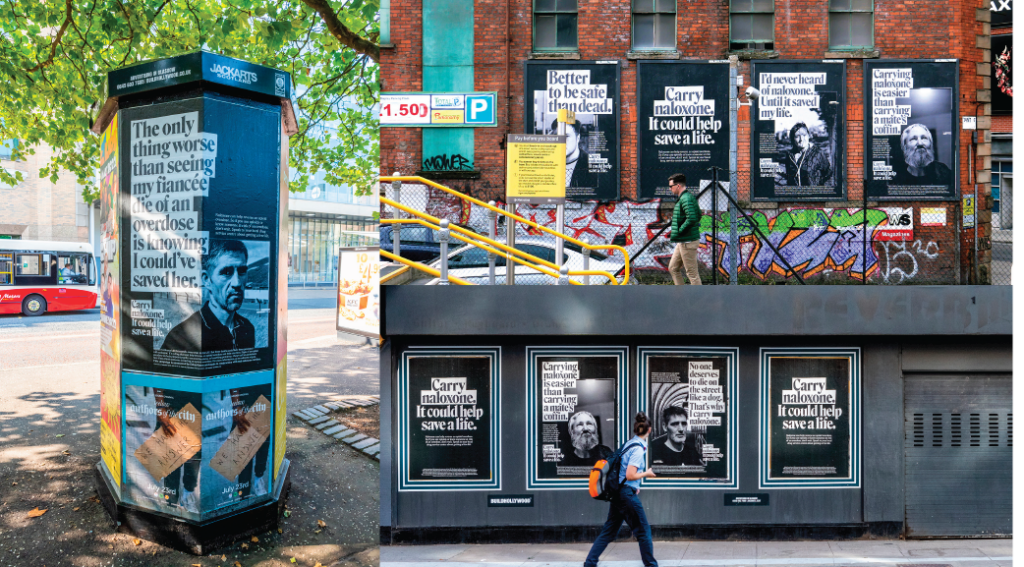
Flu season 2021/22 was different. Covid was still king and vaccinations messaging was rife. Flu was reappearing, which can be worse for kids. We needed something impactful. So we physically sneezed on people.
Our immersive cinema advert featured a young girl talking to cinemagoers directly. When she sneezes, we actually sprayed the audience. Even our digital sneezing posters sprayed people.
With both advert and poster filmed and amplified on social media, in four weeks a quarter of Manchester’s population had interacted with our campaign, with 2,032,106 impressions (80% watching the film to the end). Plus a 12.7% uplift in local child flu vaccinations.
Christmas. The most wonderful time of the year. But it’s a dangerous time for hearts — on Christmas Eve, heart attack risk rises by 37%. So Heart Research UK launched a special campaign starring a familiar character; someone whose stressful job, irregular exercise and poor diet puts his heart at particular risk on Christmas Eve — Santa Claus himself.
On the back of the campaign, visits to the Heart Research UK website increased by 117% on the previous year, and the number of new users increased by 223%. Helping to keep more hearts healthy over the holidays.
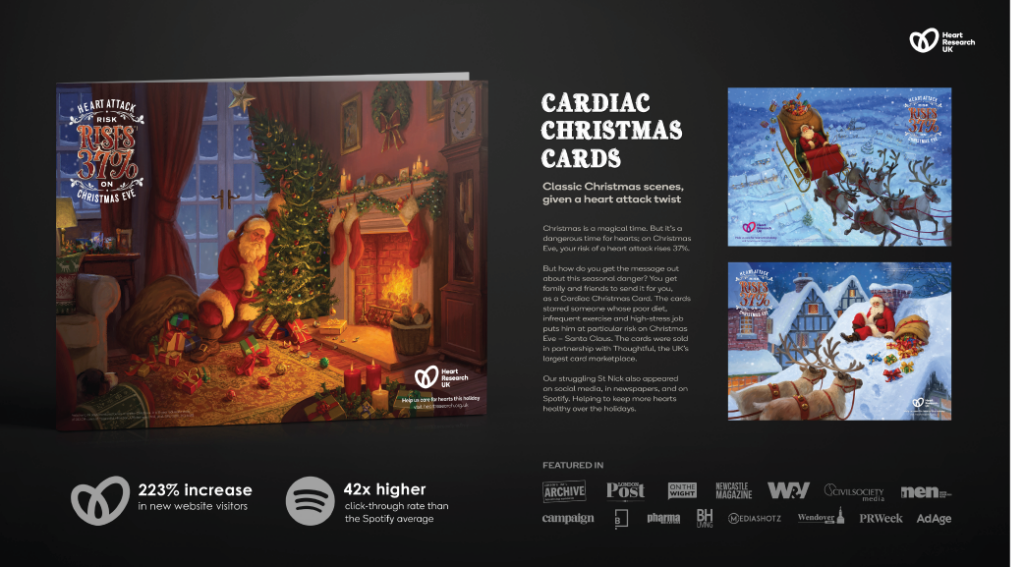
Give Your Fanny Five is a campaign that makes checking your bits memorable, accessible and acceptable, showing why taking five minutes to look, touch or learn about your fanny could save your life.
When fanny cancer deaths are preventable, instilling good habits is vital and helps to spot symptoms sooner, which could be lifesaving. With this information at hand, we launched a city-wide awareness and education campaign with the goal of arming five hundred 18- to 25-year-olds with fannies with the fanny fundamentals.
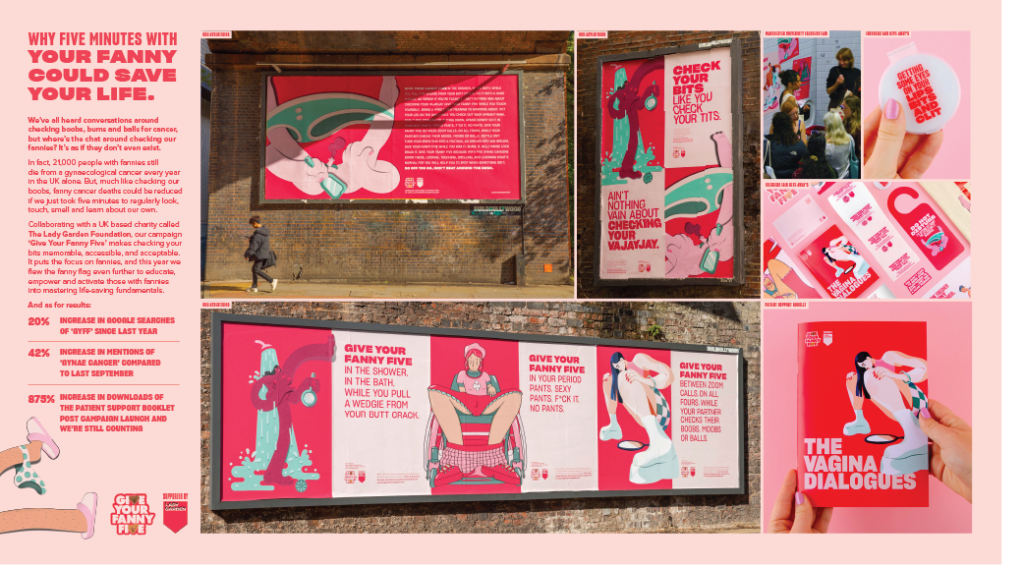
Haemophilia A is a rare bleeding disorder that affects mostly men. We needed to reach the Gen Z segment, whose members are notoriously sceptical of brands and disengaged with their condition, especially on social media.
So we decided to find a way to make our messages feel indistinguishable from the type of content these patients were already looking at online. Each series of posts was created to align with a specific type of content that our target audience was consuming, and the information that was important to them when considering a medication.
Engagement went up by 340%.
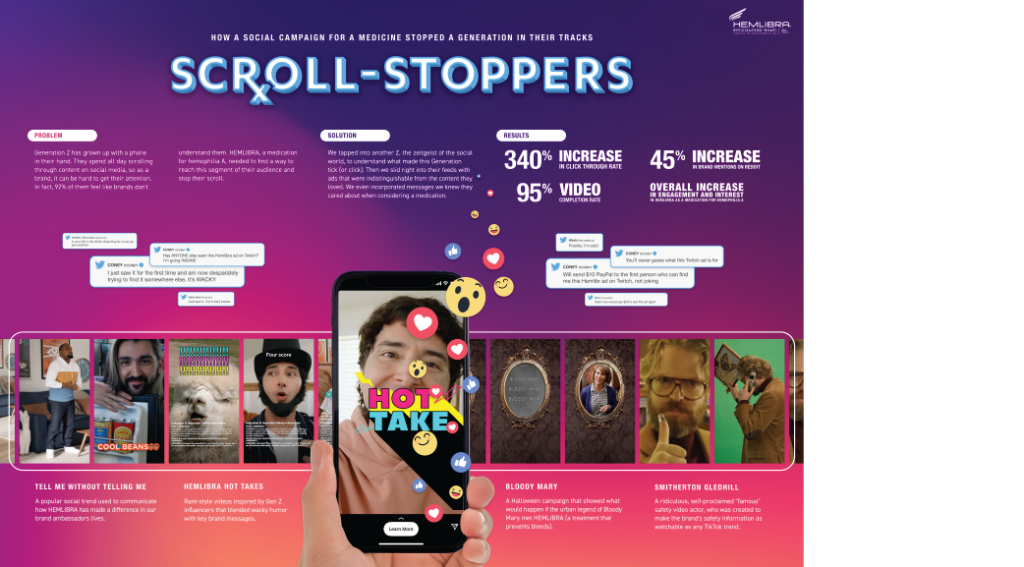
After the pandemic, emergency services staff are 13 times more likely to attempt suicide, but over 50% less likely to take up support. Based on testimonial from frontline workers, we created a set of characters called The Feelings.
The Feelings sing about their mental state while they go through their daily routine. From a paramedic dealing with a case of cot death who cries in the toilet, to “Doctor Rising Dread” who “feels sick to my stomach when I lie in bed”.
The Feelings simplify complex emotions, so they are easy to recognise and to talk about.
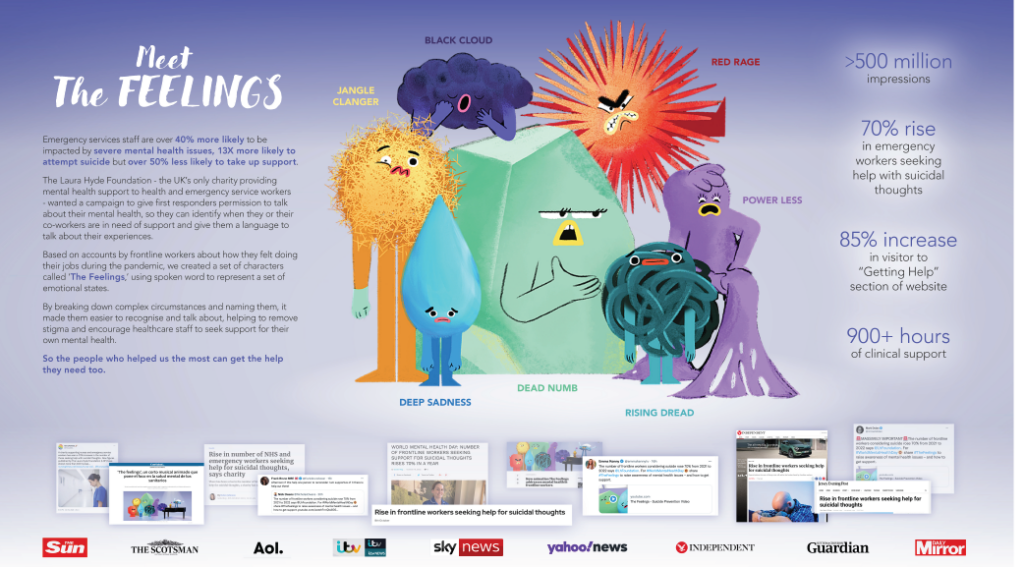
In spinal muscular atrophy (SMA), diagnostic delays can be fatal.
“SMA: A Race Against Time” is a first-of-its-kind CGI-animated campaign, educating health professionals and caregivers on the critical warning signs to look out for. When it comes to SMA, the disease symptoms can’t be replicated in healthy babies. Telling this story came with the challenge of clearly visualising the disease’s complicated symptoms through bespoke CGI animations which needed to be medically accurate.
The result? A far-reaching, impactful campaign that drives urgency for the early identification and diagnosis of SMA, which has already had life-changing outcomes for infants.
